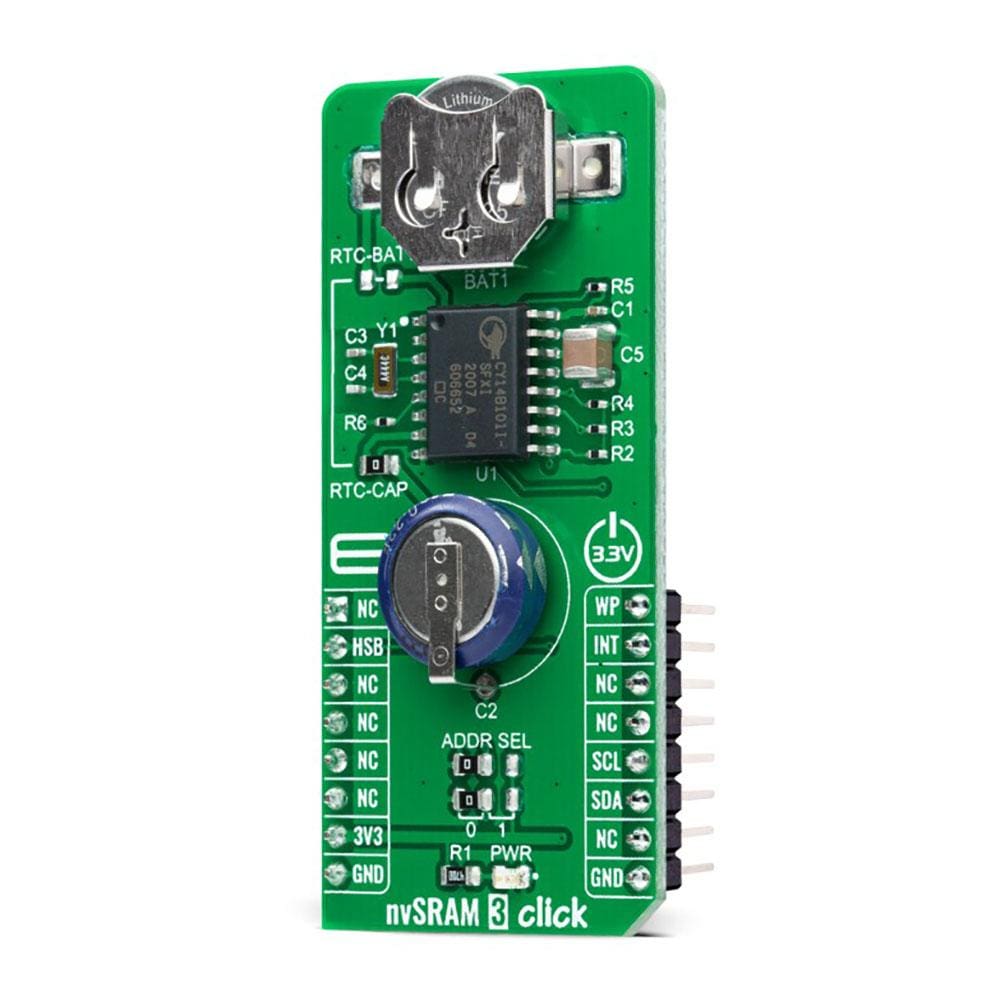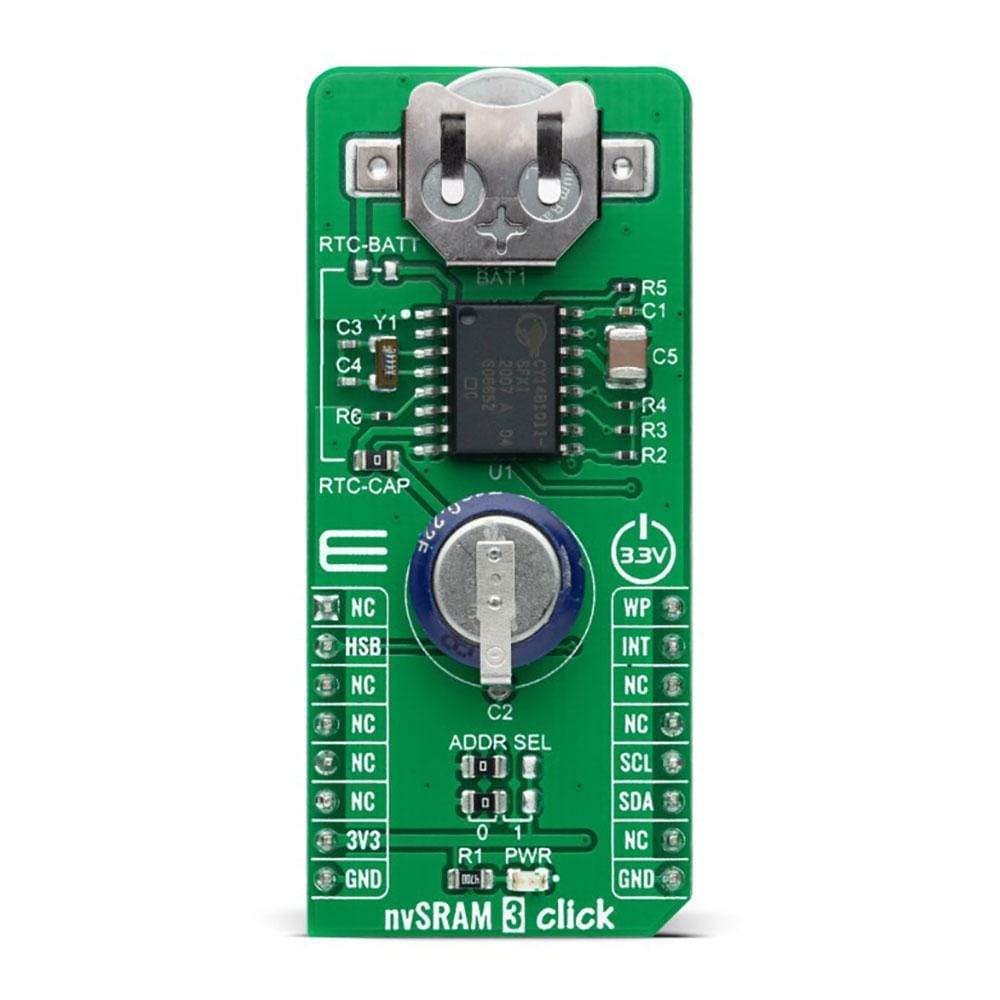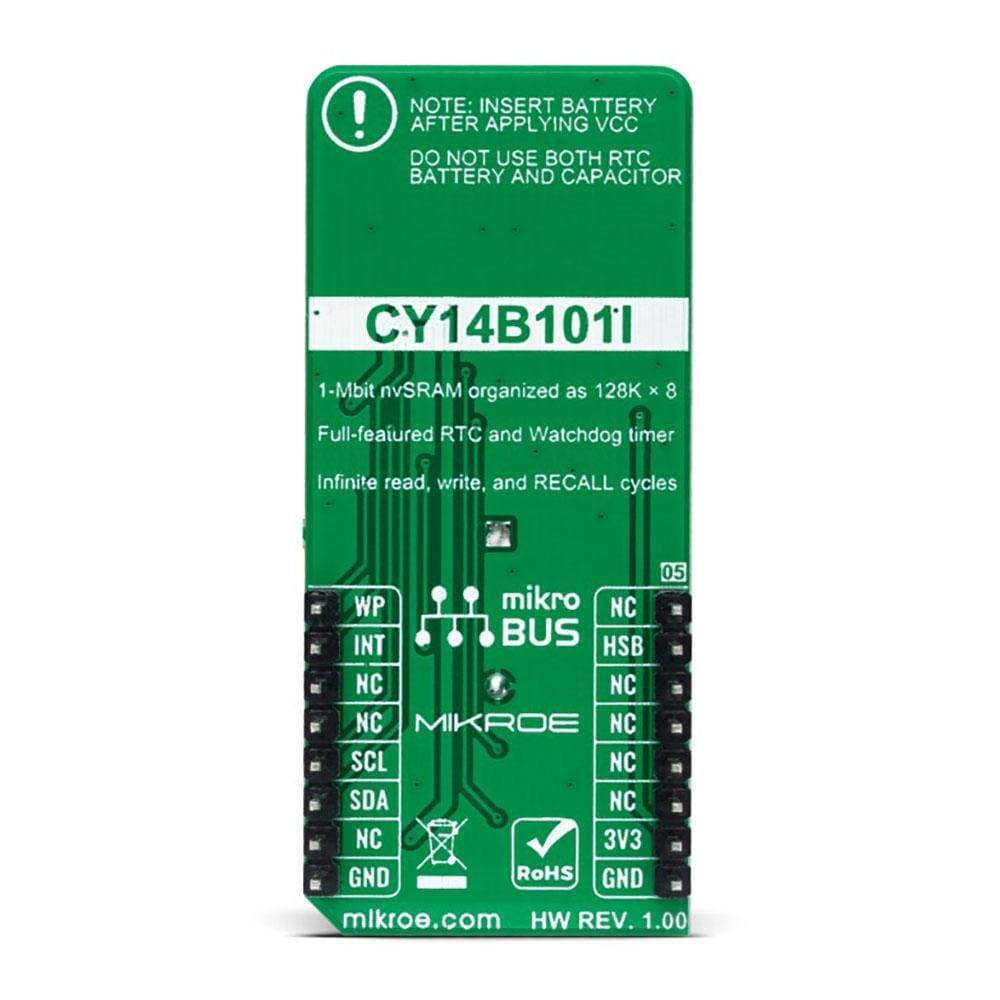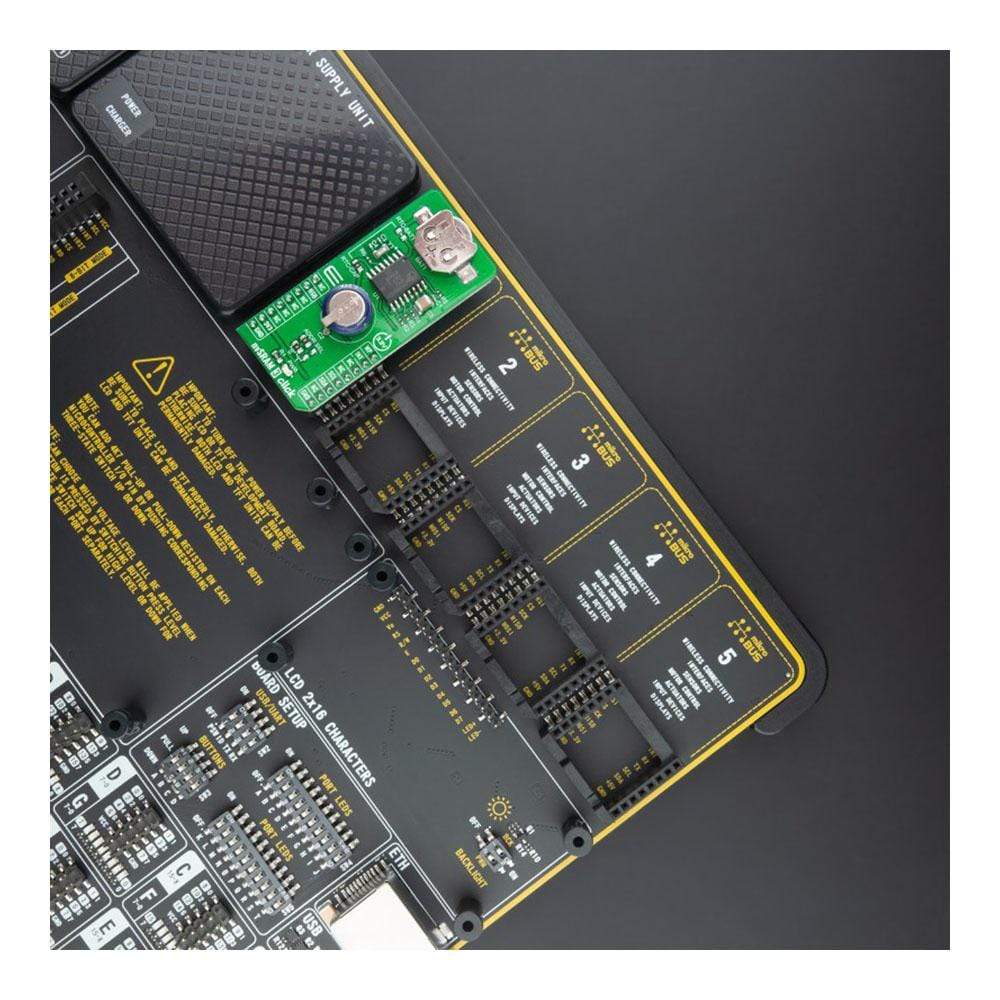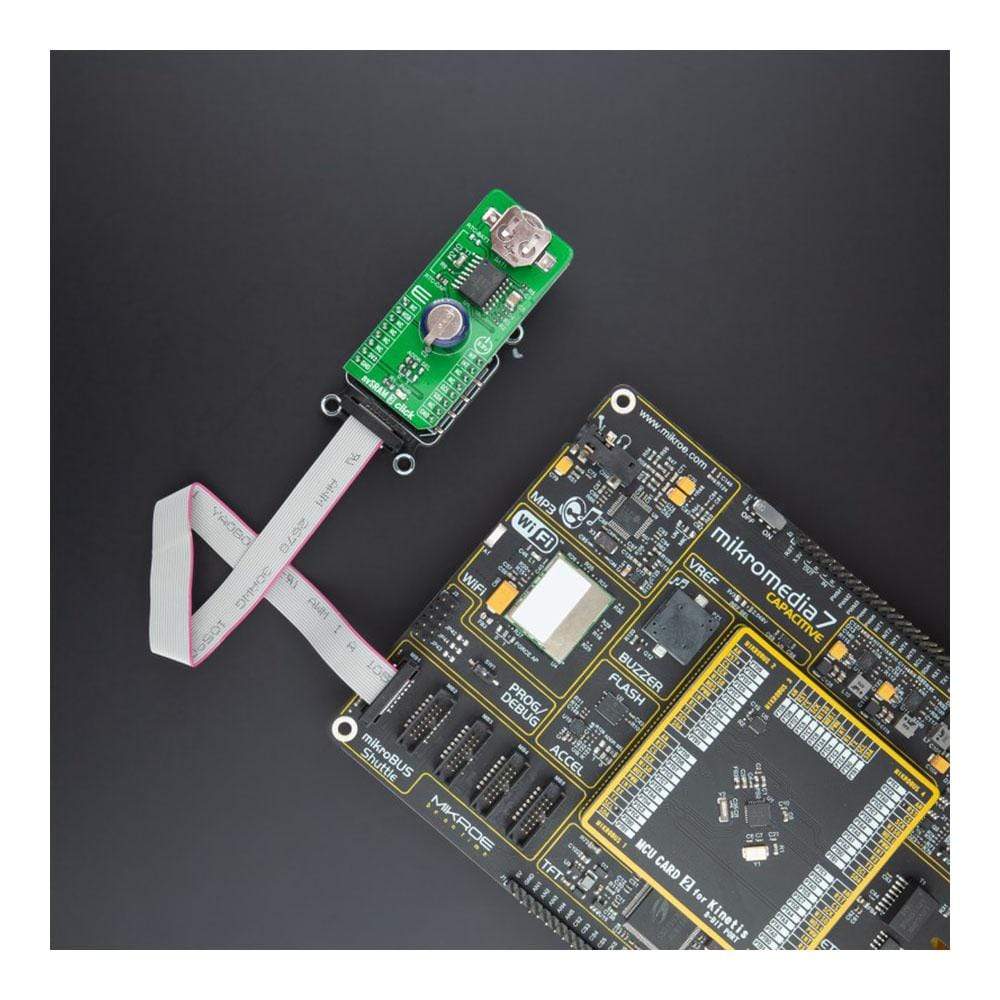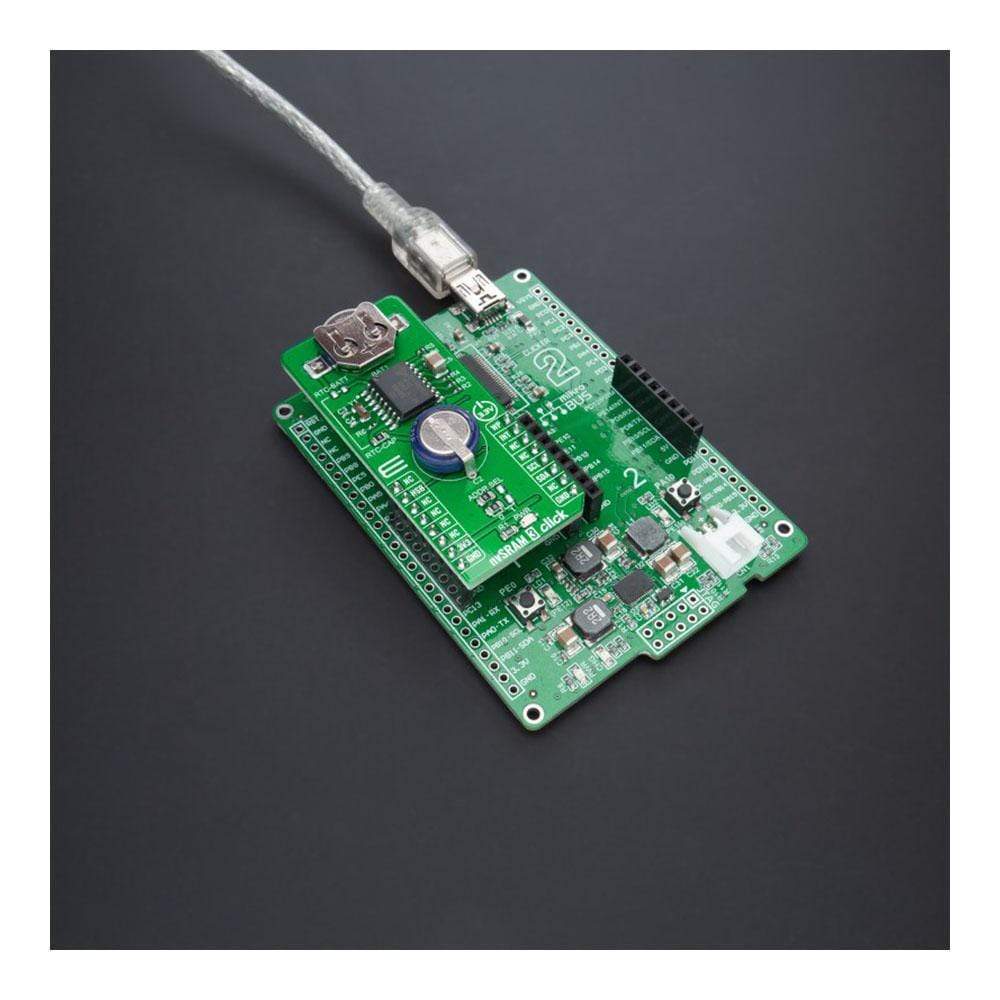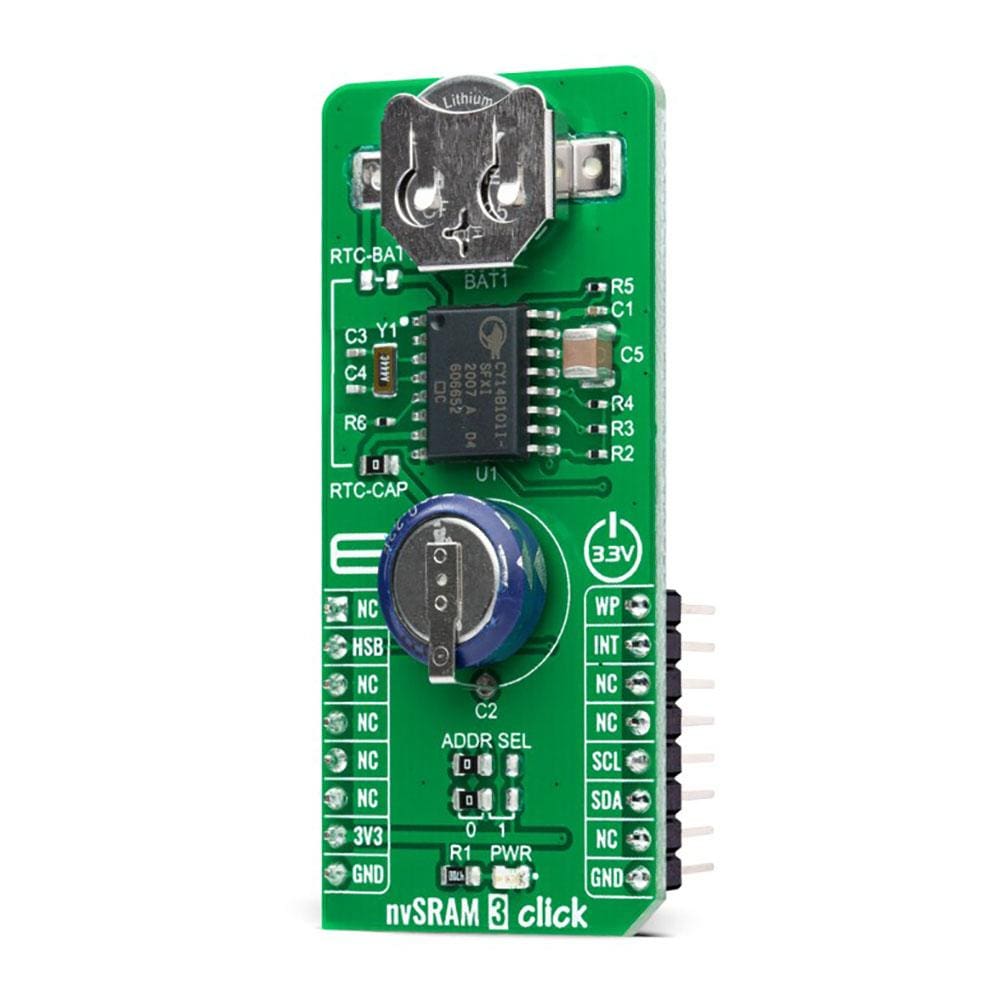
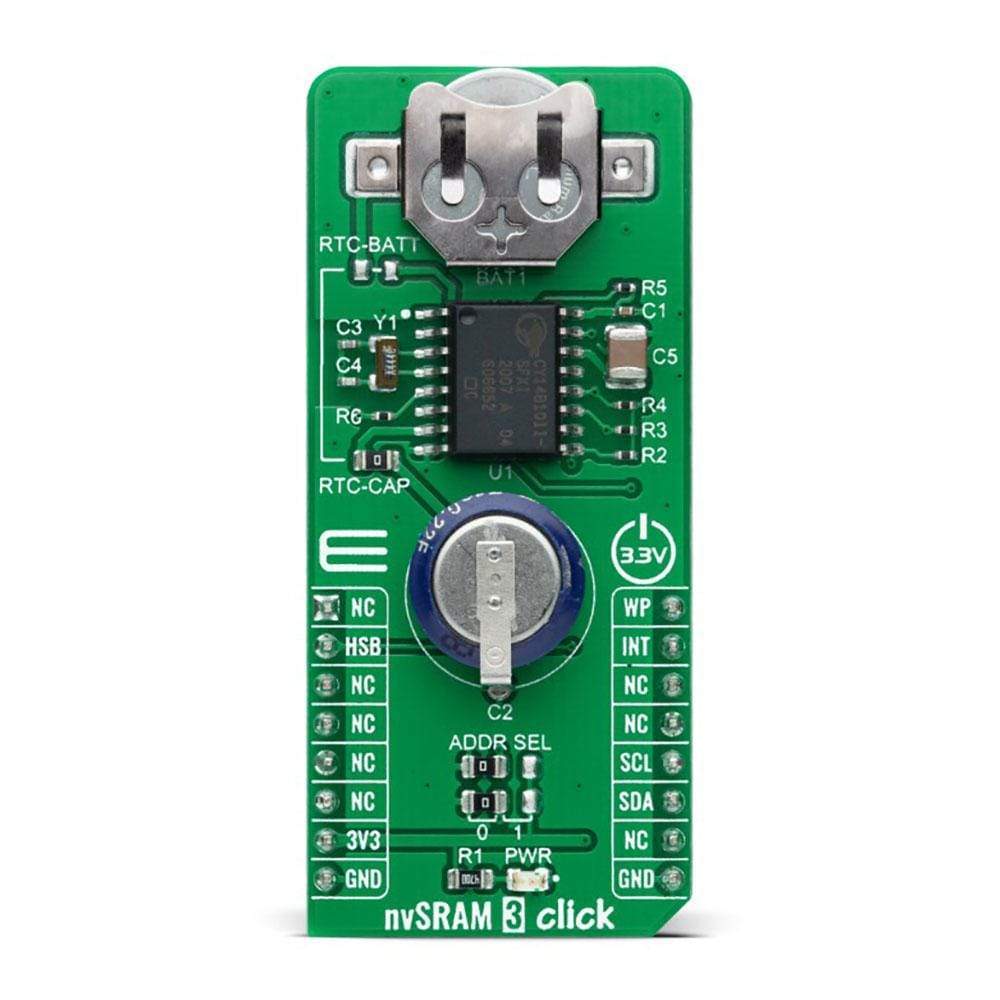
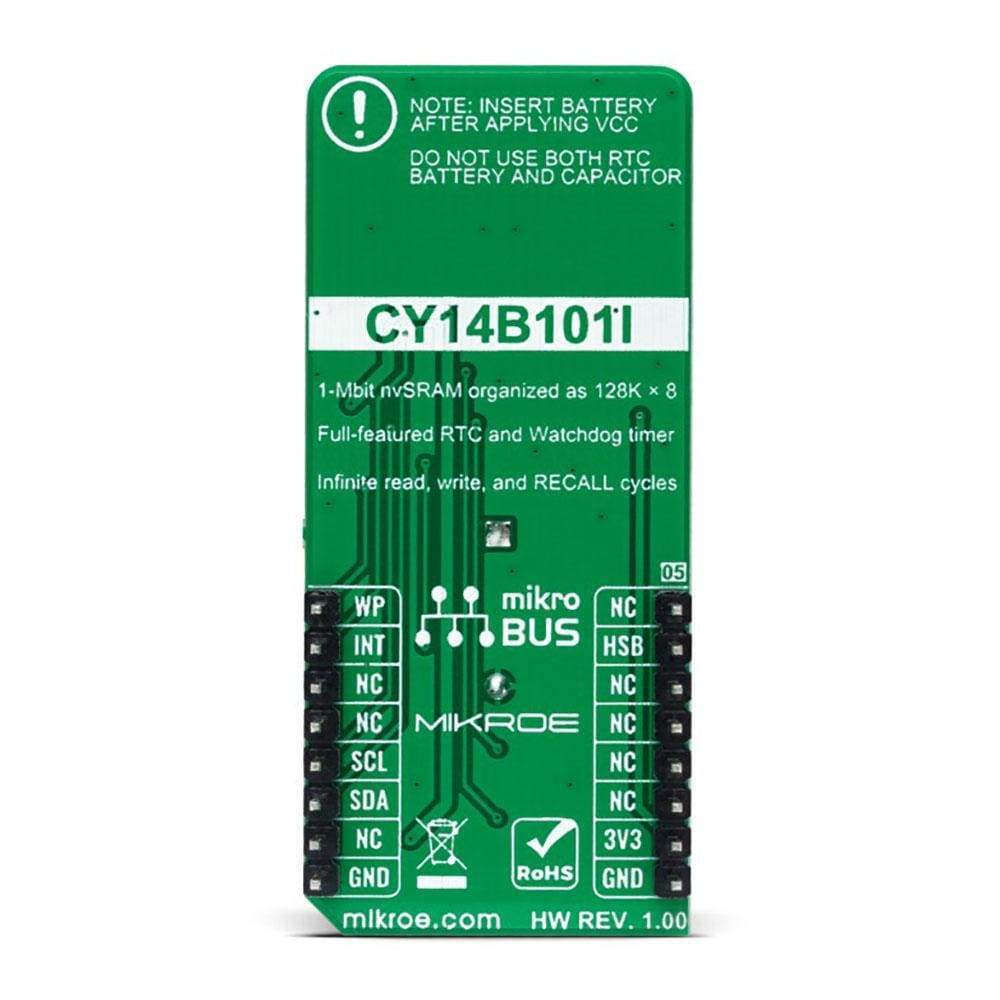
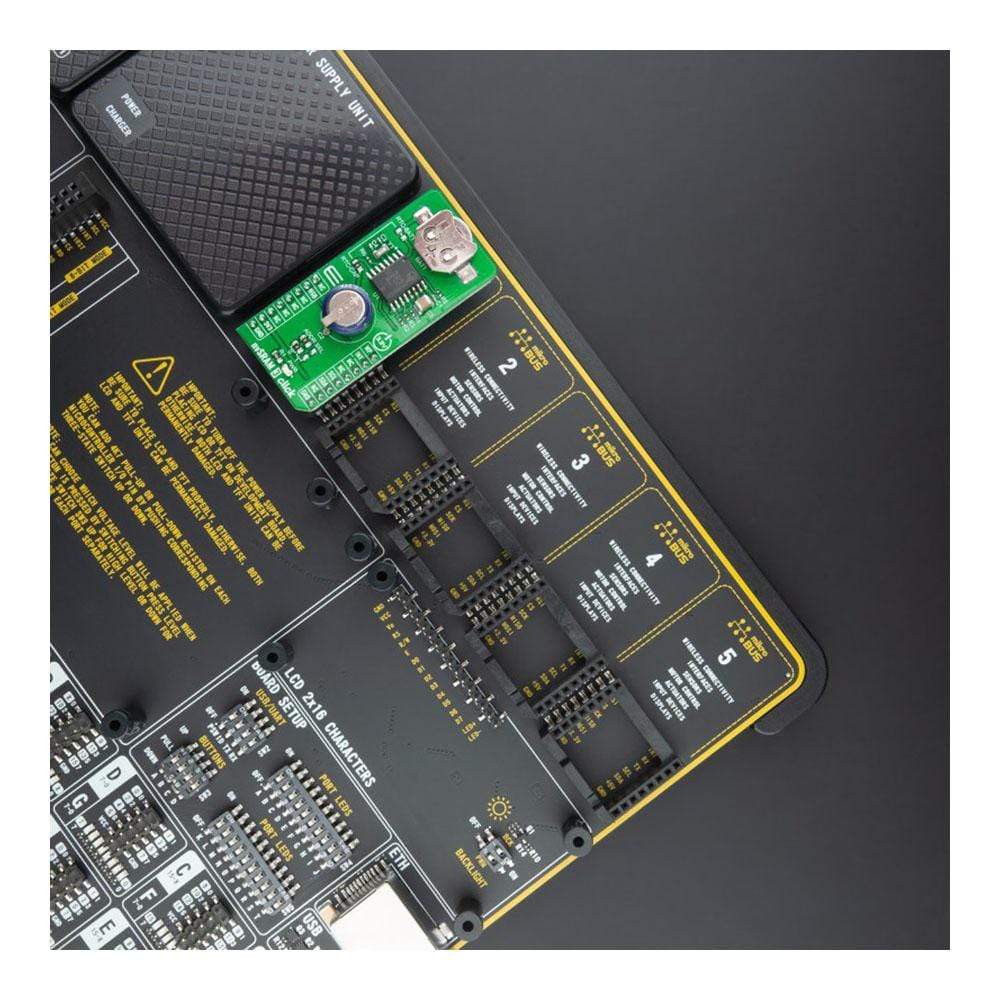
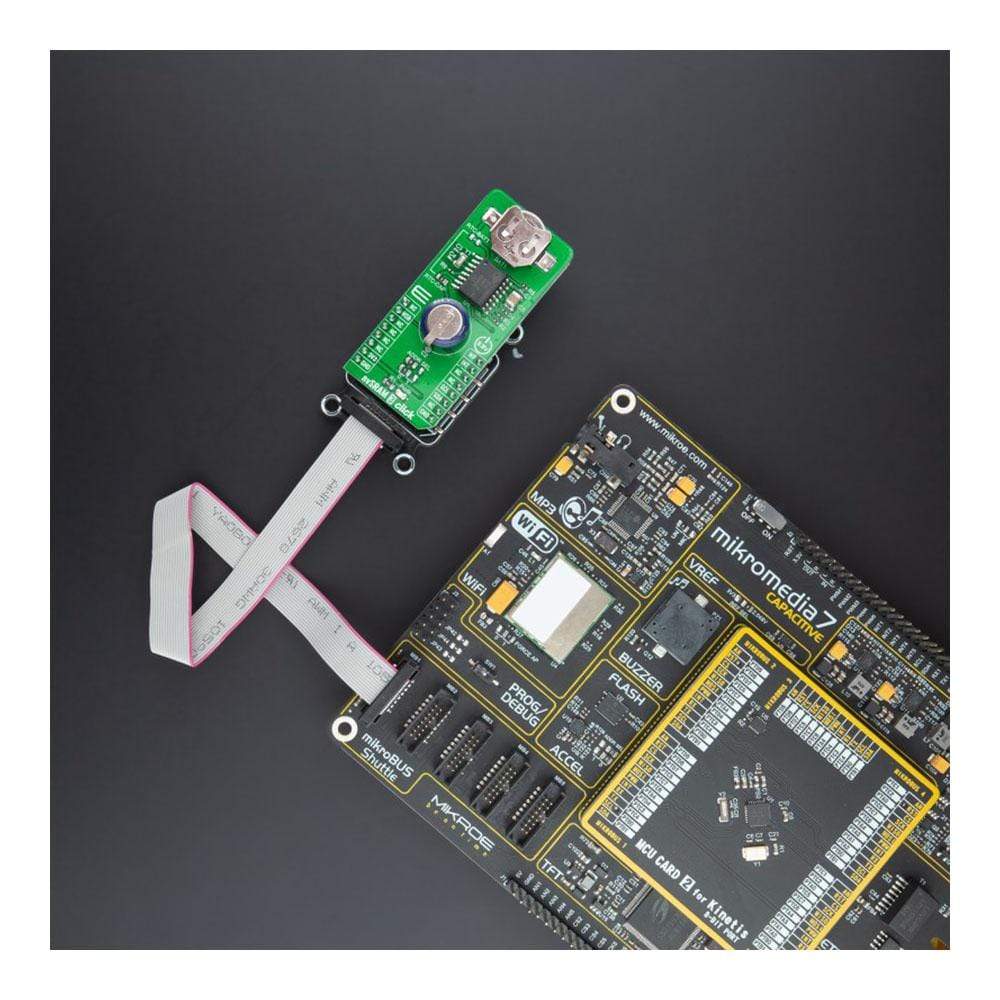
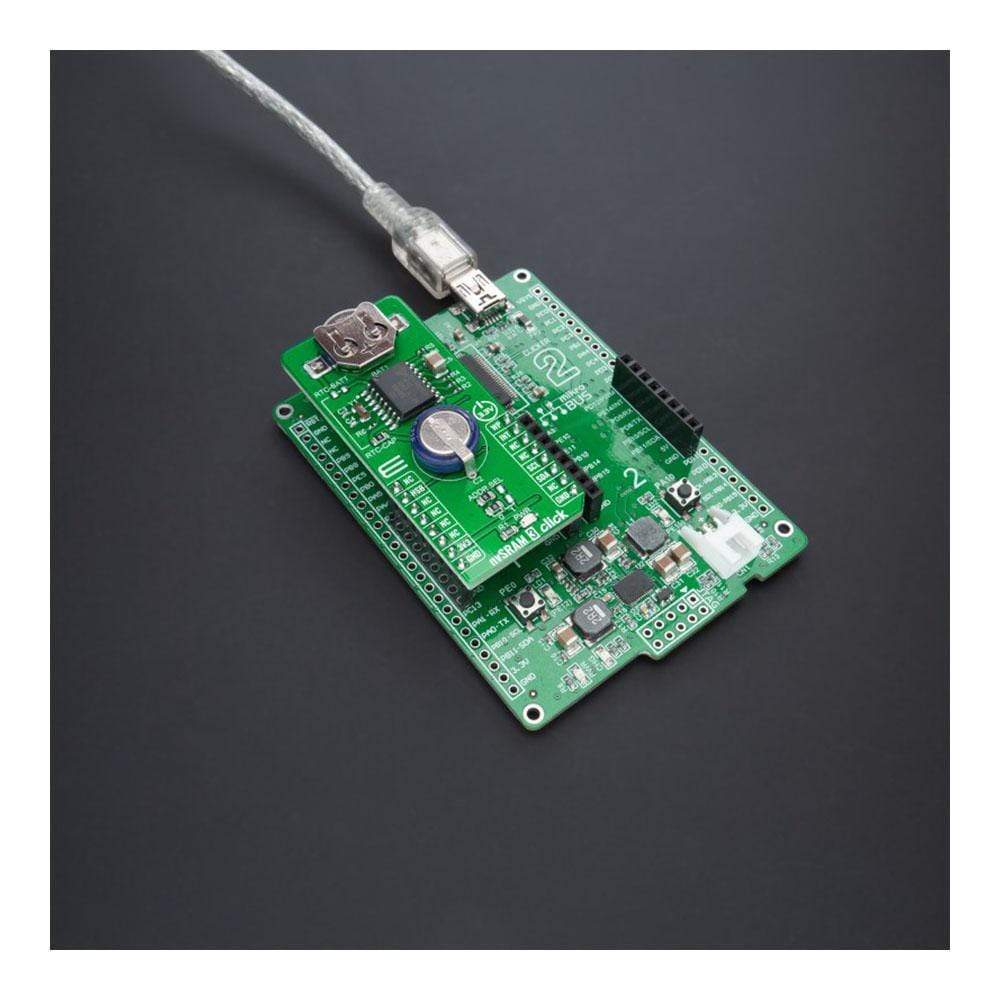
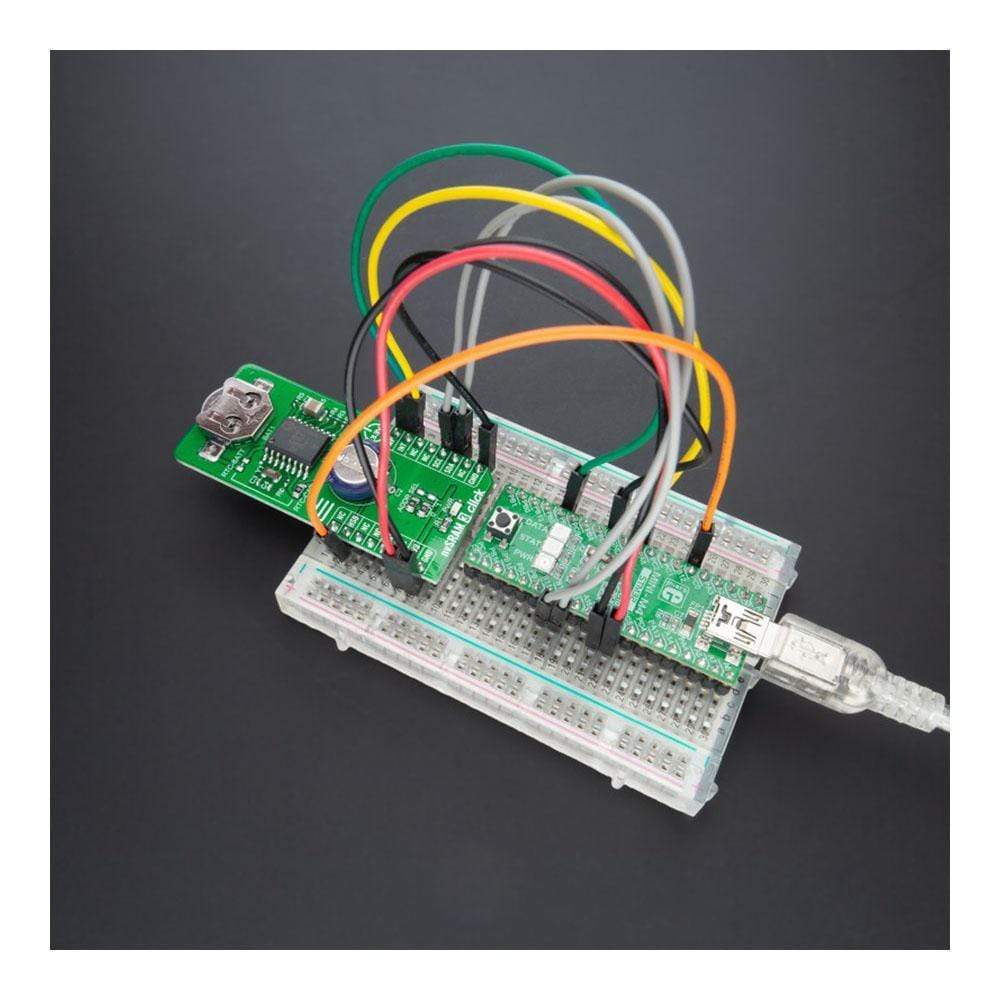
Overview
The nvSRAM 3 Click Board™ is a compact add-on board with the most reliable nonvolatile memory. This board features the CY14B101I, a 1-Mbit nvSRAM organized as 128K words of 8 bits each with a fully-featured real-time clock from Cypress Semiconductor. The embedded elements incorporate the QuantumTrap technology and provide highly reliable nonvolatile data storage. It provides infinite read and writes cycles with an additional automatic backup switch. Data transfer, initiated by the user through I2C commands, from SRAM to the nonvolatile elements takes place automatically at Power-Down. On the other hand, during the Power-Up, data is restored to the SRAM from the nonvolatile memory. This Click Board™ is suitable for all applications that require fast access and high reliability of stored data, and unlimited endurance.
The nvSRAM 3 Click is supported by a mikroSDK compliant library, which includes functions that simplify software development. This Click Board™ comes as a thoroughly tested product, ready to be used on a system equipped with the mikroBUS™ socket.
Downloads
Der nvSRAM 3 Click Board™ ist eine kompakte Zusatzplatine mit dem zuverlässigsten nichtflüchtigen Speicher. Diese Platine verfügt über den CY14B101I, einen 1-Mbit-nvSRAM, der als 128 K Wörter mit jeweils 8 Bit organisiert ist und über eine voll ausgestattete Echtzeituhr von Cypress Semiconductor verfügt. Die eingebetteten Elemente enthalten die QuantumTrap-Technologie und bieten eine äußerst zuverlässige nichtflüchtige Datenspeicherung. Es bietet unbegrenzte Lese- und Schreibzyklen mit einem zusätzlichen automatischen Backup-Schalter. Die vom Benutzer über I2C-Befehle initiierte Datenübertragung vom SRAM zu den nichtflüchtigen Elementen erfolgt automatisch beim Ausschalten. Andererseits werden beim Einschalten die Daten aus dem nichtflüchtigen Speicher im SRAM wiederhergestellt. Dieses Click Board™ ist für alle Anwendungen geeignet, die schnellen Zugriff und hohe Zuverlässigkeit der gespeicherten Daten sowie unbegrenzte Lebensdauer erfordern.
Der nvSRAM 3 Click wird durch eine mikroSDK-kompatible Bibliothek unterstützt, die Funktionen enthält, die die Softwareentwicklung vereinfachen. Dieses Click Board™ ist ein gründlich getestetes Produkt und kann auf einem System verwendet werden, das mit der mikroBUS™-Buchse ausgestattet ist.
| General Information | |
|---|---|
Part Number (SKU) |
MIKROE-4497
|
Manufacturer |
|
| Physical and Mechanical | |
Weight |
0.023 kg
|
| Other | |
Country of Origin |
|
HS Code Customs Tariff code
|
|
EAN |
8606027381898
|
Warranty |
|
Frequently Asked Questions
Have a Question?
Be the first to ask a question about this.

